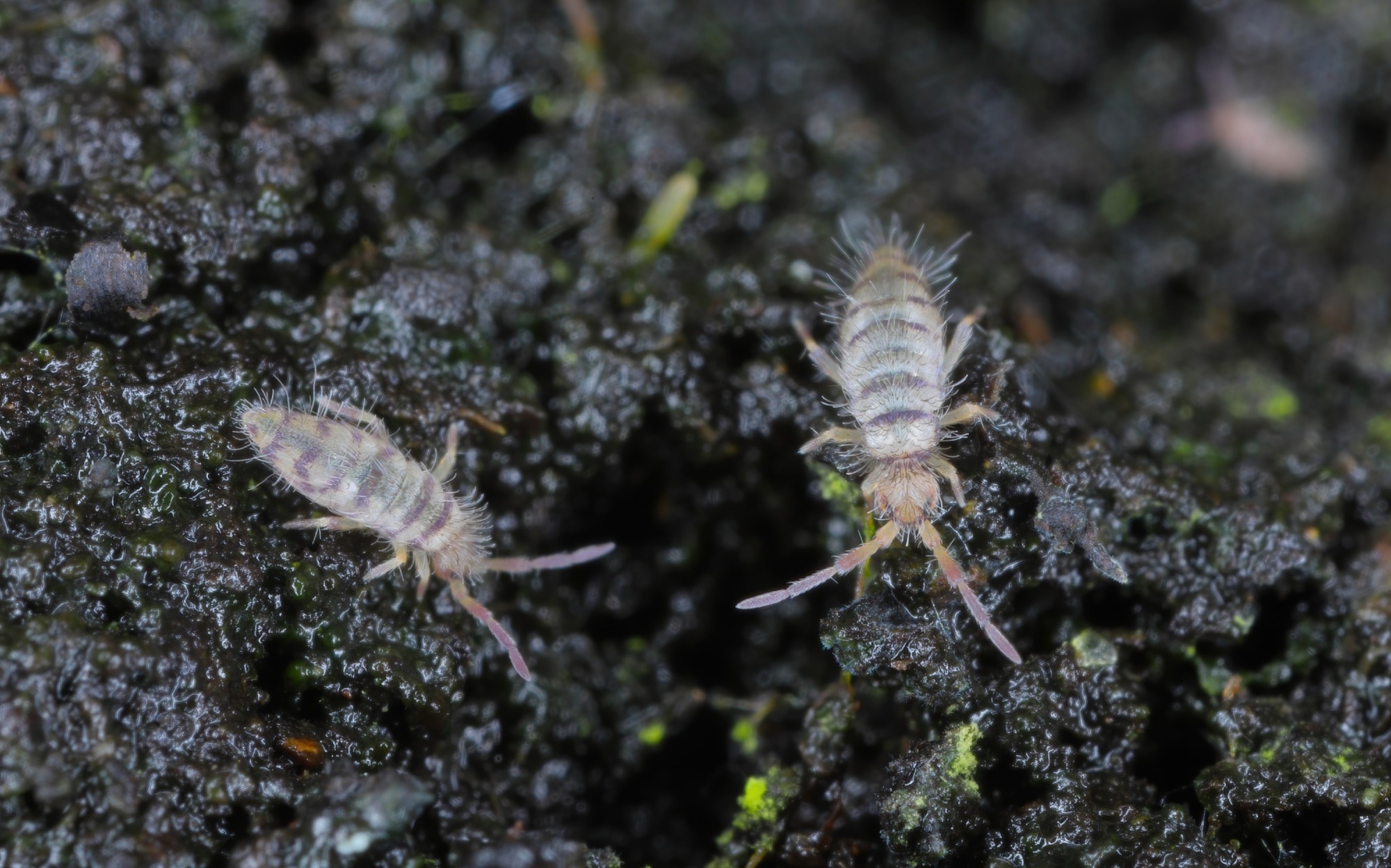In a recent article published in Nature Communications, researchers presented a novel approach to fabricating an omniphobic membrane inspired by the unique surface structures of springtails, known for their exceptional water-repellent properties. The goal was to develop a membrane that not only enhances hydrophobicity but also maintains stability and efficiency in membrane distillation (MD) applications.

Image Credit: Tomasz Klejdysz/Shutterstock.com
Background
Springtails possess a remarkable ability to remain dry even in wet environments. This is due to their outer skin, which features nano-sized, concave-shaped double re-entrant structures. These structures, combined with a low surface energy lipid layer, create air pockets that effectively resist water droplets.
Inspired by this, scientists have designed synthetic surfaces mimicking these properties, leading to the development of omniphobic membranes. Unlike superhydrophobic membranes, which primarily repel water, omniphobic membranes repel a wider range of liquids, including those with low surface energy.
The key to achieving omniphobicity is creating concave topographies that increase surface roughness and reduce surface energy. This study builds on previous research, using an electrospraying technique to replicate springtail surface morphology, aiming to develop a membrane that withstands the challenges posed by real-world applications.
The Current Study
The membrane fabrication involved several steps. First, polystyrene (PS) beads with concave re-entrant structures were produced using high-power ultrasonic pretreatment, reducing their size from microns to nanoscale. This reduction was critical, as smaller beads create more contact points with the substrate, enhancing surface roughness and hydrophobicity.
The PS beads were then coated onto a polyvinylidene fluoride (PVDF) substrate using an electrospraying technique, allowing precise control over the surface morphology by adjusting parameters like voltage and humidity.
Following the electrospraying process, the membrane underwent dip-coating in a low-toxicity short-chain perfluoropolyether lubricant to mimic the lipid layer found on springtail surfaces. This dual-layer approach aimed to maximize the membrane's hydrophobic properties while ensuring stability during operation.
To evaluate the membrane's performance, water bouncing tests and surface energy measurements (using the Owens-Wendt method) were conducted. The water bouncing test involved dropping water droplets onto the membrane surface and recording their behavior to assess hydrophobicity. Surface energy was measured to determine the effectiveness of the modifications.
Results and Discussion
The results showed that the optimized omniphobic membrane achieved significant hydrophobicity, with a contact angle of 167.5 °, marking a substantial improvement over membranes not treated with ultrasound. The reduction in PS bead size from 526.4 nm to 92.8 nm played a key role in this enhancement, as smaller beads increased contact points, boosting surface roughness.
The study also emphasized the value of NaOH treatment for the substrate, which significantly improved membrane stability. While untreated membranes lost their water-repellent properties after 30 abrasion cycles, the NaOH-treated membrane retained its hydrophobicity after 120 cycles, demonstrating its durability.
The membrane's design was further examined in the context of membrane distillation (MD) applications. The concave re-entrant structures not only improved hydrophobicity but also supported the formation of a stable Cassie-Baxter state, which is critical for omniphobicity.
This state enables the formation of air pockets at the liquid interface, effectively repelling low-surface-energy liquids. In a direct contact membrane distillation test, the membrane maintained a 99.9 % salt rejection rate when treating seawater mixed with sodium dodecyl sulfate, highlighting its potential for water treatment applications where conventional methods might be less effective.
Conclusion
This study demonstrates the successful fabrication of a springtail-inspired omniphobic membrane, exhibiting high hydrophobicity and stability, positioning it as a promising option for membrane distillation applications.
Using an innovative electrospraying technique to mimic the natural surface structures of springtails, the researchers developed a membrane that not only effectively repels water but also maintains its functionality in challenging conditions. The results highlight the potential of biomimetic approaches in advancing materials for water purification, addressing the need for efficient and sustainable solutions to global water scarcity.
Future research could further enhance the membrane’s properties and explore its use in different water treatment scenarios, contributing to the next generation of membrane technologies.
Discover More: Graphene Membranes: Applications in Modern Water Purification
Journal Reference
Guo J., et al. (2024). Springtail-inspired omniphobic slippery membrane with nano-concave re-entrant structures for membrane distillation. Nature Communications 15, 7750. DOI: 10.1038/s41467-024-52108-9, https://www.nature.com/articles/s41467-024-52108-9